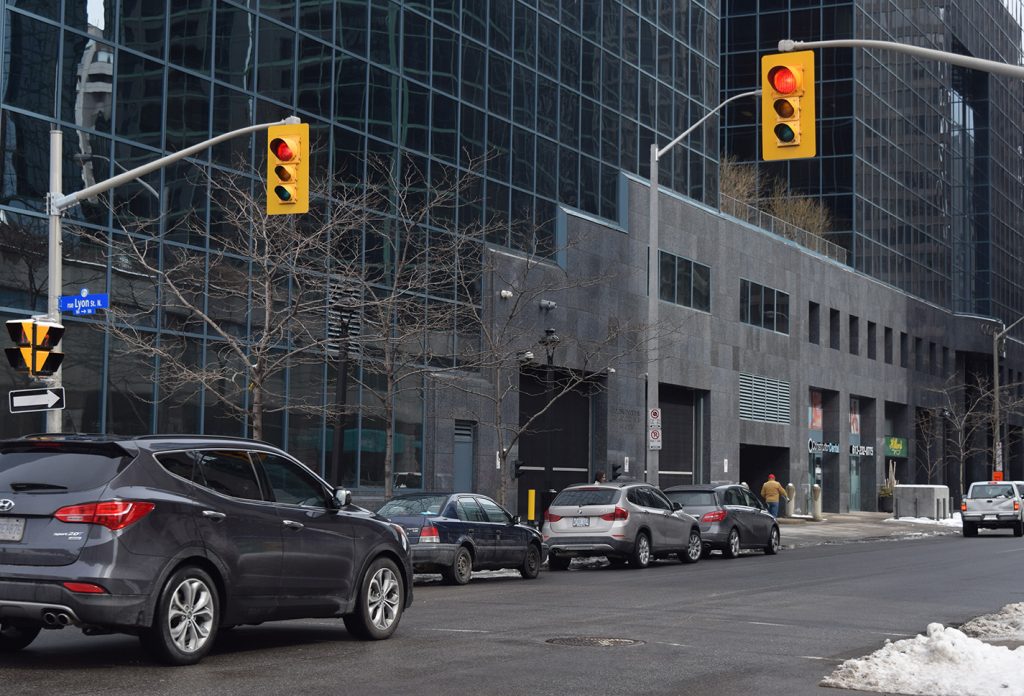Albert and Slater streets to be redesigned with launch of LRT
By Gowlene Selvavijayan
Plans now under way to redesign Albert and Slater streets — key east-west commuter routes in downtown Ottawa — would transform the way people move in the city’s downtown core, according to those involved in the project.
The city’s transportation committee approved plans for the $32-million makeover on April 4, and city council was expected to endorse the plan this week. The project will be launched in 2019 once the LRT’s Confederation Line is up and running by the end of this year.
The plan will redesign the downtown transit corridor stretching from Empress Avenue in the west to Waller Street in the east, including Mackenzie King Bridge over the Rideau Canal.
The plan recommends the realignment of Slater Street, presenting the opportunity to make the site of the future Ottawa Central Library the focal point of the two arterial roads on the eastern edge of LeBreton Flats.
For decades, Albert and Slater streets have functioned as extensions of the Transitway in the downtown core, with hundreds of buses streaming down the streets during morning and afternoon commutes. Once the LRT launches — a moment initially planned for March, but now delayed until November — many OC Transpo buses will no longer be needed on those roads.
Parsons Corporation vice-president Ron Clarke said decommissioning this part of the Transitway will make navigating the downtown core easier.
“With the elimination of the Transitway, what comes off the street is the complexity that we find today on Albert and Slater with bus-only lanes and the signage and so forth. It makes a much more efficient corridor for all modes to move through,” Clarke said.
The recommended plan will reduce the two one-way roads to single lanes with traffic in each direction. They will become mixed-use roads to be shared with remaining OC Transpo and STO vehicles.
Transportation general manager John Manconi initially estimated a 65-per-cent decline in transit operation down Albert and Slater streets. However, more recent projections suggest there will only be an average 50- to 60-per-cent reduction in the number of buses using the corridor.
Alta Vista Coun. Jean Cloutier said he was not impressed by the projected numbers being lower than originally anticipated.
“I guess my reaction is, is that all?” Cloutier remarked at the transportation committee meeting.
City staff informed the council that although projected numbers are lower than expected, some sections of Albert and Slater will experience a greater decline in buses than on average.
The redesign plan will reallocate space currently occupied by traffic to “zero-emission active transportation” — in other words, making way for more pedestrian and cyclist pathways.
Coun. Catherine McKenney said the plan will allow Ottawa residents to reclaim public space.
“We can’t continue to widen roads. There’s no more space. We did that for years — 30, 40 years. It failed,” McKenney said.
Road reconstruction will accommodate more spacious sidewalks of at least two metres and elevated bike paths. This will help simplify travel and improve safety on the road on 18 intersections, city staff said.
McKenney said the prioritization of people and the environment in city infrastructure is long overdue. It’s estimated the redesign would cut 581 tonnes of greenhouse gas emissions within its first year.
However, an estimated 43 per cent of trees in the area will be removed to make way for construction.
“We have to be vigilant about trees,” McKenney said, urging staff to ensure trees are relocated where possible, and not just taken out.
“In the downtown, that is not a usual sight — and to lose those trees would be absolutely devastating.”
City staff said they will develop a tree retention, protection and replacement strategy with the detailed design to be released later this year.
Mackenzie King Bridge construction and work on Albert and Slater from Bay to Elgin will take place between 2019 and 2022. Construction extending from Empress to Bay will start in 2021 and continue for about two years.
The construction will be coordinated with the completion of the new Ottawa Central Library.

